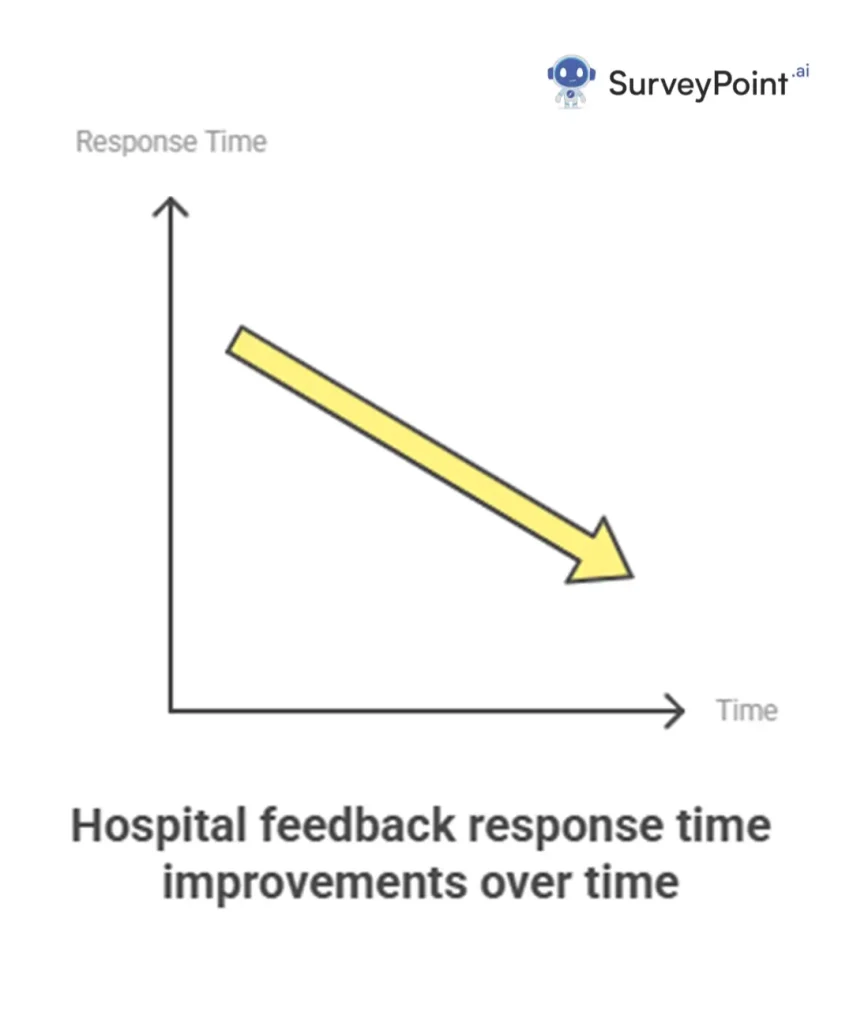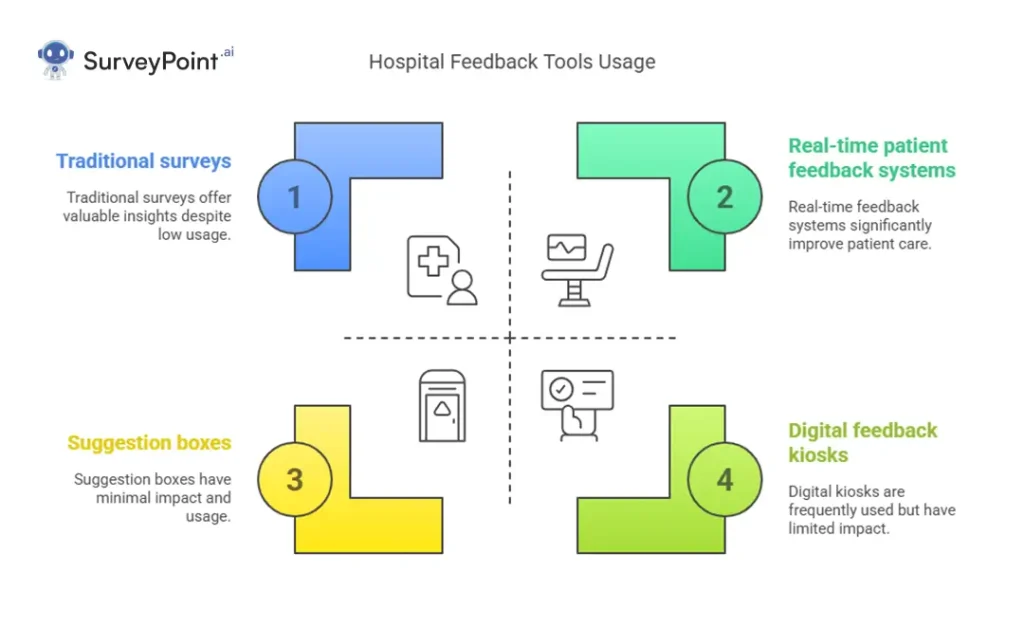Imagine being discharged from a hospital and receiving a simple yet thoughtful message:
“Thank you for choosing us. How was your experience? Anything we could’ve done better?”
Now, multiply that by 300+ hospitals—each refining patient care based on direct feedback from messages like that. The result?
A measurable transformation in patient satisfaction, care quality, and hospital performance metrics.
This blog reveals how effective hospital feedback messages have reshaped patient care, backed by real results and actionable insights.
Table of Contents
ToggleWhat Are Hospital Feedback Messages?
Hospital feedback messages are short, direct communications—usually sent via SMS, email, or patient portals—that invite patients to share their experience post-treatment or during their hospital stay.
Unlike traditional paper forms or suggestion boxes, these messages:
- Prompt faster responses
- Provide structured and unstructured feedback
- Help administrators and medical teams take real-time actions
The Problem with Traditional Feedback Systems
Hospitals have always collected feedback. But legacy methods had limitations:
- Low response rates due to paper-based systems
- Delayed analysis, leading to outdated decisions
- Generic surveys failing to capture patient emotions
- Staff disconnection from real feedback
This led to a feedback gap—the time between a negative experience and the hospital’s action was often too long to matter.
📉 According to a 2022 patient experience study, over 68% of negative reviews never reached internal hospital teams due to ineffective survey systems.
How Feedback Messages Transformed 300+ Hospitals
1. Real-Time Responses
Hospitals started sending feedback messages within 12–24 hours after discharge. This quick outreach helped:
- Increase response rates by 40%
- Identify red flags before they reached public platforms
- Let patients feel heard almost instantly

2. Empowered Frontline Staff
With feedback routed directly to department heads:
- Nurses and staff started owning patient issues
- Real-time praise boosted morale
- Complaint resolution time dropped by 60%
“We now resolve patient concerns within hours, not weeks,” says Maria Chen, Nurse Manager at Sunridge Hospital.
3. Personalized Patient Engagement
Hospitals that personalized messages saw 25% higher engagement rates. For instance:
- Including patient names
- Referring to specific treatments or staff
- Asking open-ended questions like “How did our maternity team support you?”
These changes humanized the process and strengthened hospital-patient relationships.
4. Predictive Analytics in Care Improvement
With structured feedback data, AI tools predicted:
- Common reasons for dissatisfaction
- Departments with frequent service gaps
- Seasonal spikes in patient complaints
Hospitals could now anticipate issues—like long wait times in the emergency room—and act preemptively.
5. Closing the Feedback Loop
Sending a thank-you or follow-up message after resolving a complaint boosted patient trust.
Patients no longer felt their comments went into a black hole. Instead, they saw real change.
Case Study: Feedback Implementation at GraceCare Network
Location: Midwest, USA
Facilities: 17 hospitals
Before:
- Less than 10% feedback response rate
- Rising patient dissatisfaction
- Poor Google reviews impacting referrals
After implementing automated feedback messages:
✅ Response rate: 52%
✅ 35% drop in online negative reviews
✅ 18% increase in return patients
GraceCare didn’t just ask for feedback. They acted on it—and patients noticed.
Tools Used in Gathering and Analyzing Feedback
| Tool Type | Example Platforms | Functionality |
| Messaging Systems | Twilio, NexHealth | Send timely, personalized messages |
| Feedback Forms | Surveypoint, Qualtrics | Collect structured patient input |
| Analytics Engines | Tableau, Power BI | Track trends and generate reports |
| CRM Integration | Salesforce Health Cloud | Link patient data with feedback records |

Challenges Faced During Implementation
- Data Privacy Concerns
Hospitals had to navigate HIPAA-compliant messaging systems. - Technology Adoption Resistance
Older staff were hesitant about SMS-based systems. Training resolved this. - Integration with Legacy Systems
Syncing new tools with EMRs took time and resources.
Despite these, hospitals that stayed the course saw long-term wins.
Best Practices for Effective Feedback Messaging
✅ Send messages within 24 hours post-visit
✅ Keep it short—1-2 questions max
✅ Use personalized language
✅ Act on feedback and follow up
✅ Involve staff in reviewing and responding
These practices aren’t just best for hospitals—they’re expected by today’s digitally savvy patients.
What Patients Are Saying Today
- “I was surprised they actually fixed the issue I mentioned!”
- “Got a call within 3 hours after my feedback—amazing.”
- “It’s clear they care about what I think.”
Over time, positive reviews increased, and referrals followed.
📊 Hospitals with strong feedback practices saw up to 20% increase in patient referrals within the first year.
Conclusion
Hospital feedback messages aren’t just a box to check—they’re a living bridge between care and communication.
More than 300 hospitals have already proven how a shift in feedback strategy can:
- Save reputations
- Improve staff performance
- And most importantly—give patients the dignity of being heard.
If you’re part of a healthcare system, the message is clear:
Start asking. Start listening. Start changing.
FAQs (People Also Ask)
1. Why is patient feedback important in healthcare?
Patient feedback provides direct insights into the care experience, helping hospitals address gaps, improve quality, and build patient trust.
2. What types of feedback messages work best in hospitals?
Short, personalized messages sent soon after a visit or discharge typically receive the best response rates. SMS and email are both effective.
3. How do hospitals manage negative feedback from patients?
Leading hospitals acknowledge concerns, follow up with the patient, and involve department heads to resolve issues quickly—often within 24–48 hours.
4. Are hospital feedback messages HIPAA compliant?
Yes, when using secure, encrypted messaging platforms that follow HIPAA regulations for handling patient data.
5. Can patient feedback really influence hospital policies?
Absolutely. Patient feedback often drives decisions around staffing, training, room cleanliness, and even food menus.

